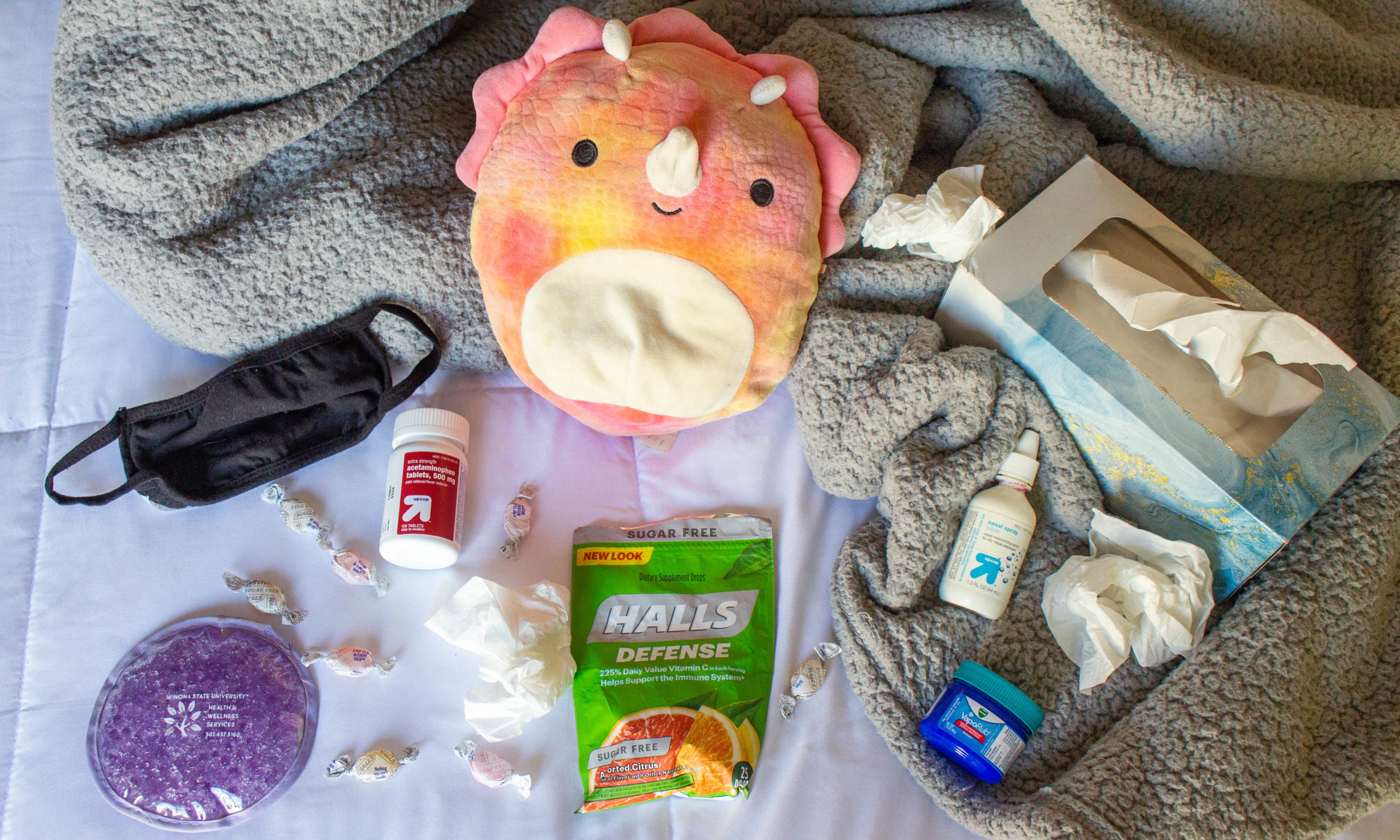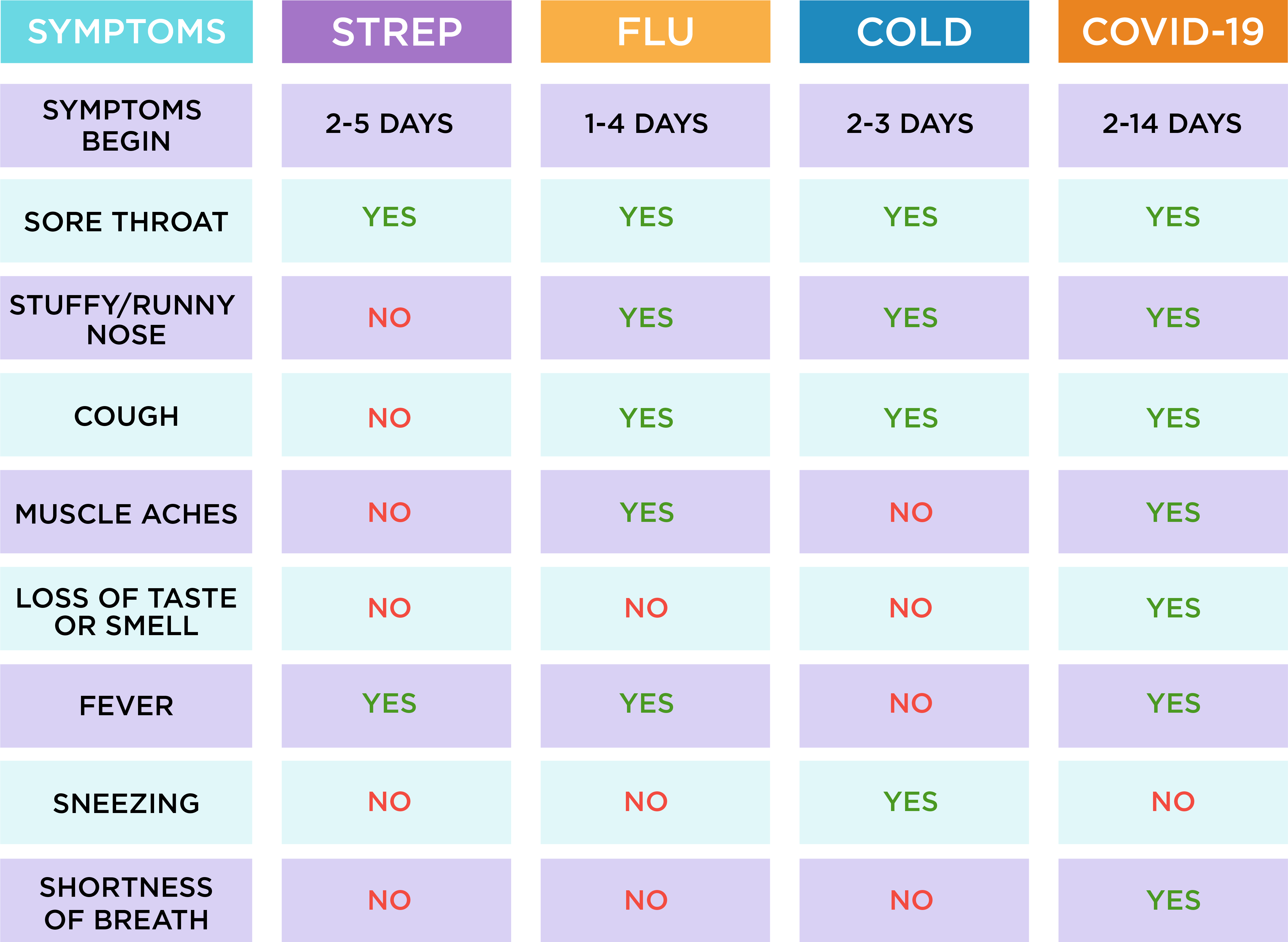
5 Upper Respiratory Illnesses to Watch for This Fall That Aren’t COVID-19
Flu season is in full swing. Some students may have already experienced illnesses within their households and classrooms. Some may have already made a trip to Health Services to get checked out by a health care provider for their symptoms. As we are nearing the end of the semester, the last thing you want is to fall ill, miss classes, and miss holiday celebrations with friends and family.
Many upper respiratory illnesses (URI) have symptoms in common with COVID-19. It’s important to let your health care providers, such as Ask-A-Nurse, be your guide in determining if it’s COVID or not. Prevention against contagious URI is similar to protecting yourself against COVID-19 as many of the illnesses below are spread the same way.
Upper Respiratory Illness Prevention
- Avoid sharing food & drink
- Wash or sanitize hands often
- Cover your cough or sneeze
- Avoid touching your face
- Disinfect shared spaces
- Wear a mask when ill
- Get your flu shot & stay up to date on COVID-19 vaccines

Flu
Flu is caused by the influenza virus that can cause mild to severe illness. The flu comes on very suddenly compared to common colds that may take several days to develop. People who have the flu experience some or all the symptoms below.
Symptoms
- Fever or feeling feverish or having chills
- Cough
- Sore throat
- Runny or stuffy nose
- Muscle or body aches
- Headaches
- Fatigue
- Nausea, vomiting, and diarrhea (more common in children, rare for adults)
Self-Care
- Take ibuprofen or acetaminophen for pain and to reduce fever
- Take cough drops or throat lozenges
- Drink lots of fluids
- Get steamy with a hot bath, humidifier, or boiling water
- Get lots of rest
Strep Throat
Strep throat is a contagious bacterial infection that can make your throat feel sore and scratchy. It is caused by the streptococcus bacterium and is spread through droplets when someone with the infection coughs or sneezes, through shared food and drinks. You can also pick up the virus by touching a surface that has been infected.
Strep throat that is caused by bacteria needs to be treated by taking antibiotics that help reduce the pain and symptoms. However, it is possible to get viral sore throat that can be treated using our self-care tips below:
Symptoms
- Throat Pain and Painful Swallowing
- Red or Swollen Tonsils, sometimes with white patches
- Swollen or tender lymph nodes in your neck
- Fever
- Headache
- Rash
- Nausea or Vomiting (most common in young children)
- Body Aches
Self-Care
- Saltwater gargles
- Drink warm tea or honey-lemon water
- Eat ice cream or popsicles to ease pain and swelling
- Take ibuprofen or acetaminophen for pain and to reduce fever
- Get plenty of rest
- Drink plenty of fluids, some find that ginger ale and orange juice can provide further pain relief
- Get steamy with a hot bath, humidifier, or boiling water
Common Cold
More than 200 viruses can cause a cold, but rhinoviruses are the most common type. Symptoms of a cold usually peak within 2-3 days, but some symptoms such as cough, runny or stuffy nose can last up to 10-14 days.
Symptoms
- Sneezing
- Stuffy or runny nose
- Sore throat
- Coughing
- Mucus dripping down your throat (post-nasal drip)
- Watery eyes
- Fever (rare)
Self-Care
- Get plenty of rest
- Drink plenty of fluids
- Use saline nasal spray such as Flonase
- Suck on lozenges
- Coat your throat with a teaspoon of honey to help with coughing
- Get steamy with a hot bath, humidifier, or boiling water
Sinus Infections
Sinus infections (sinusitis) happen when fluids build up in sinuses–the air-filled pockets in the face–which allow germs to grow. Most sinus infections are viral and some are bacterial. Most sinus infections resolve on their own without the use of antibiotics.
Symptoms
- Runny nose
- Stuffy nose
- Facial pain or pressure
- Headache
- Mucus dripping down the throat (post-nasal drip)
- Sore throat
- Cough
- Bad Breath
Self-Care
- Use a nasal spray, such as Flonase, use daily until symptoms improve
- Take sinus congestion medication such as Sudafed PE
- Take ibuprofen or acetaminophen for pain
- Use a netty pot
- Place a warm towel on the face to reduce pressure and gently massage to loosen mucus
- Get steamy with a hot bath, humidifier, or boiling water
- Drink plenty of fluids
- Get plenty of rest
Ear Infections
An ear infection (acute otitis media) is an infection of the middle ear which is the air-filled space behind the ear drum that contains the tiny vibrating bones of the ear. An ear infection is caused by bacteria or a virus that goes into the middle ear. It can also result from another illness such as cold, flu, or allergies that cause congestion and swelling in the ear, nose and throat.
Often times, earaches and infections clear up on their own. Other times, antibiotics are used to clear up the infection.
Symptoms
- Ear pain
- Fever
- Drainage of fluid from the ear
- Trouble hearing
Self-Care
- Take ibuprofen or acetaminophen for pain
- Warm compress to the affected ear